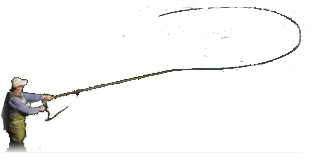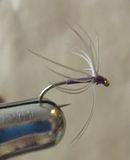Hi,
After looking at some recent threads with great spider patterns, and checking out Donald's site again, I've gotten back into tying a few myself. Took a couple photos and thought I would share them. The first is a classic pattern that has stood the test of time, a Snipe and Purple. Probably best tied a bit smaller on a size 16, this one is a size 14 and works well here. It's a simple tie, as most spiders are, just purple thread and a snipe feather hackle tied in perpendicular to the hook. I've waxed the thread, though that's not necessary anymore.
This pattern is, as far as I know, a new one but done in a very classic style. I've used UniThread light blue thread, waxed and touch dubbed with Hare's mask. The hackle is a waterhen feather, with a peacock herl collar. I was tying up some waterhen bloa's (drop the collar and use yellow thread; although I think the dubbing is tradionally mole, which I don't have), which is a brilliant pattern by the way, and thought the light blue thread would work well for a darker version. The closest Pritt lists is a "Blue Partidge", which has a blue silk body dubbed with lamb's wool, and a partridge feather hackle.
Now, if the weather would just fine up enough to get a day on the water I could actually try these out.
- Jeff






 Reply With Quote
Reply With Quote
